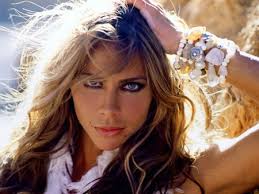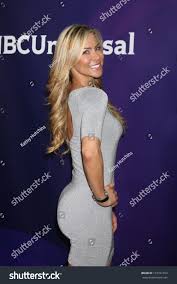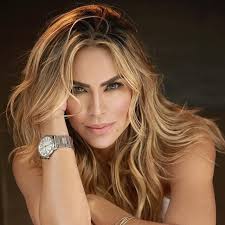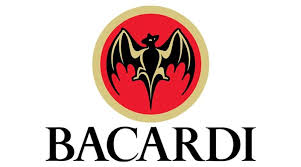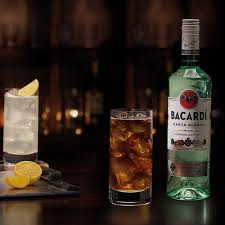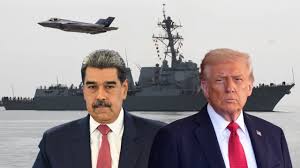
MARIA CORINA MACHADO: “Maduro empezó esta guerra, y el presidente Trump va a terminarla”. PHOTOS.
El Senado de Estados Unidos rechaza una resolución para prohibir a Trump acciones militares en Venezuela.
La votación se ha celebrado un día después de que representantes de la Administración declararan a un grupo de prominentes senadores y congresistas que el Gobierno carece, hoy por hoy, de justificación legal para atacar objetivos dentro de Venezuela. La admisión se produjo dentro de una sesión informativa clasificada presidida por los secretarios de Estado, Marco Rubio, y de Defensa, Pete Hegseth, la primera que ambos han ofrecido juntos a los legisladores estadounidenses sobre la campaña estadounidense de ataques militares contra supuestas lanchas del narcotráfico. La pasada noche Hegseth notificó un nuevo golpe contra una embarcación en el Caribe, en el que murieron tres personas.
Numerosos analistas y expertos, e incluso algunos legisladores, consideran ilegal la campaña que ya ha asesinado al menos a 69 personas desde el 2 de septiembre. La consideran ilegal, entre otras razones, porque no cuenta con la autorización del Congreso.
Según la cadena de televisión CNN, pese a su admisión el Gobierno estadounidense sigue a la busca de un argumento legal que le autorice a atacar objetivos terrestres en Venezuela si así lo desea, sin necesidad de pasar por el Congreso.
“Basándome en esa sesión informativa, creo que la Administración no quiere ir a la guerra con Venezuela”, declaraba el congresista Adam Smith, el demócrata de mayor rango en el Comité de Servicios Armados de la Cámara de Representantes. “Pero, por otro lado, el presidente Trump es bastante famoso por —cómo decirlo— su modo caótico de hacer las cosas. Puede cambiar de opinión muy rápidamente. Así que quién sabe”.
La decisión del Senado de este miércoles también se ha producido mientras el portaaviones Gerald Ford, el mayor y más moderno de la flota estadounidense, se dirige hacia el Caribe para unirse en los próximos días a la docena de barcos militares de su país que ya montan guardia en aguas internacionales frente a las costas de Venezuela. Cuando llegue, el 20% de los buques de guerra estadounidenses movilizados en el mundo estarán en aguas latinoamericanas, según un análisis de la revista especializada Stars and Stripes. Pero Donald Trump guarda sus cartas sobre cuáles son sus intenciones sobre este despliegue, y si acabará optando -como muchos sospechan- por un ataque contra objetivos en territorio del país caribeño. Por el momento aún no ha tomado una decisión.
El estadounidense juega a una guerra de nervios con Caracas y aumenta la presión mientras deshoja la margarita: despliega barcos y más de 10.000 soldados; un día habla de una “nueva fase” en su campaña contra el narcotráfico que incluya acciones en tierra y al otro niega que vaya a haber una guerra con Venezuela. Reconoce que ha autorizado operaciones encubiertas de la CIA y declara que los días del presidente venezolano Nicolás Maduro al frente de ese país están contados, mientras al mismo tiempo se niega a contestar si tiene planes para intervenir allí. Toda una campaña de presión militar y psicológica para intimidar al chavista.
“No me cabe duda de que esta campaña tiene como objeto intimidar y lograr la caída del régimen de Maduro”, sostenía esta semana el director de política sobre droga de la ONG Washington Office on Latin America (WOLA), John Walsh, en una charla con periodistas.
Por el momento, Trump aún debe tomar una decisión sobre si y cómo proceder en Venezuela. Baraja varias opciones y las justificaciones legales que pueda argumentar en cada una de ellas, según varios medios estadounidenses. El periódico New York Times sostiene que entre los escenarios que se sopesan se incluyen ataques directos contra las unidades militares que protegen a Maduro y la toma del control de los campos petrolíferos del país.
Trump es reacio a aprobar misiones que puedan poner en peligro a las tropas estadounidenses, algo que podría enfurecer a sus bases no intervencionistas. Tampoco quiere lanzar una operación que pueda acabar en fracaso: tiene muy presente el fiasco de su primer mandato, cuando intentó forzar la salida de Maduro mediante el apoyo a la oposición encabezada por Juan Guaidó. “Pero muchos de sus asesores principales presionan en favor de una de las opciones más agresivas: expulsar a Maduro del poder”, apunta el diario.
Solo el 18% de los estadounidenses se declara favorable al uso de la fuerza para forzar la caída de Maduro, mientras que casi la mitad rechaza esa opción, según una encuesta de YouGov. El resto no sabe o no contesta.
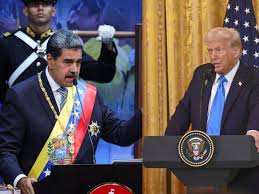
La Administración republicana ya ha acusado al presidente venezolano de ser uno de los cabecillas del cartel de los Soles, y ha doblado la recompensa que ofrece por su captura a 50 millones de dólares. Es posible que la Casa Blanca, que alega que se encuentra en un “conflicto armado no internacional” contra los carteles de la droga, intente recurrir a esa supuesta vinculación para justificar algún tipo de medida, según apuntan expertos.
Una intervención en toda la regla dentro de Venezuela “violaría el artículo 2-4 de la Carta de Naciones Unidas, que prohíbe el uso de la fuerza que viole el territorio de otro país soberano. Constituiría una invasión ilegal, como la de Rusia en Ucrania. También violaría la autoridad del Congreso para declarar la guerra, recogida en la Constitución”, advierte en videoconferencia la abogada Heather Brandon-Smith, de la organización Friends Committee on National Legislation.
La Casa Blanca sostiene que todo cuanto hace en las aguas internacionales latinoamericanas se ajusta a la legalidad. “El presidente Trump ha sido claro en su mensaje a Maduro: dejen de enviar droga y criminales a nuestros países”, indica la portavoz de la Casa Blanca Anna Kelly en un comunicado. “El presidente ha dejado claro que quiere continuar atacando a los narcoterroristas que trafiquen narcóticos ilícitos — cualquier otra cosa es pura especulación”.
Es probable que, de momento, las cosas sigan como están, a la espera de la llegada del Gerald Ford y su grupo de apoyo. No se le espera al menos hasta la próxima semana: el martes atravesaba el estrecho de Gibraltar en dirección al Atlántico, escoltado protocolariamente por la fragata española Numancia durante su cruce. Por razones de seguridad, el Pentágono no informa sobre las posiciones de sus barcos en misión activa.
Este miércoles, Trump se trasladó al lugar más favorable para pronunciarse. A Miami, el corazón de la oposición al presidente venezolano Nicolás Maduro en Estados Unidos, para participar en una reunión del Foro Empresarial Estadounidense en la que intervenía también la líder de la oposición venezolana, y premio Nobel de la Paz de este año, María Corina Machado. Pero no quiso tratar sobre el asunto, más que para defender los ataques extrajudiciales contra supuestas narcolanchas que los barcos de su país han perpetrado en el Pacífico y en el Caribe, y que han dejado al menos 66 muertos: “estamos haciendo saltar por los aires terroristas de carteles. Los estamos haciendo saltar – vinculados al régimen de Maduro en Venezuela y otros”, declaraba.
Por su parte, Machado reiteraba, en su intervención por teleconferencia, su apoyo incondicional a ese tipo de medidas. Según denunciaba, Maduro es “el cabecilla de esta estructura narcoterrorista que ha declarado la guerra contra el pueblo venezolano y contra las naciones democráticas en la región, donde las redes criminales sustentan al régimen chavista con el tráfico de drogas, oro, armas y personas”. “Maduro empezó esta guerra, y el presidente Trump va a terminarla”.

MARIA CORINA MACHADO: “Maduro started this war, and President Trump is going to finish it.” PHOTOS.
The United States Senate rejects a resolution to prohibit Trump from taking military action in Venezuela.
The vote was held a day after administration representatives told a group of prominent senators and congressmen that the government currently lacks legal justification for attacking targets inside Venezuela. The admission came during a classified briefing led by Secretary of State Marco Rubio and Secretary of Defense Pete Hegseth, the first they have given together to U.S. lawmakers regarding the U.S. campaign of military attacks against alleged drug-trafficking boats. Last night, Hegseth reported another attack on a vessel in the Caribbean, in which three people died.
Numerous analysts and experts, and even some lawmakers, consider the campaign, which has already killed at least 69 people since September 2, to be illegal. They consider it illegal, among other reasons, because it lacks congressional authorization.
According to CNN, despite its admission, the U.S. government is still searching for a legal argument that would authorize it to attack ground targets in Venezuela if it so desires, without needing congressional approval.
“Based on that briefing, I believe the Administration doesn’t want to go to war with Venezuela,” stated Congressman Adam Smith, the ranking Democrat on the House Armed Services Committee. “But, on the other hand, President Trump is quite famous for—how to put it—his chaotic way of doing things. He can change his mind very quickly. So, who knows?”
Wednesday’s Senate decision also came as the aircraft carrier Gerald Ford, the largest and most modern in the U.S. fleet, heads toward the Caribbean to join the dozen other U.S. warships already stationed in international waters off the coast of Venezuela. When it arrives, 20% of the US warships deployed worldwide will be in Latin American waters, according to an analysis by the specialized magazine Stars and Stripes. But Donald Trump is keeping his cards close to his chest regarding his intentions for this deployment, and whether he will ultimately opt—as many suspect—for an attack against targets on Venezuelan soil. For the moment, he has not yet made a decision.
The US president is playing a game of nerves with Caracas and increasing the pressure while he plays it safe: deploying ships and more than 10,000 troops; one day he speaks of a “new phase” in his campaign against drug trafficking that includes actions on land, and the next he denies that there will be a war with Venezuela. He acknowledges that he has authorized covert CIA operations and declares that the days of Venezuelan President Nicolás Maduro are numbered, while at the same time refusing to answer whether he has plans to intervene there. It’s a full-blown campaign of military and psychological pressure to intimidate the Chavista leader.
“I have no doubt that this campaign is intended to intimidate and bring down the Maduro regime,” said John Walsh, director of drug policy at the Washington Office on Latin America (WOLA), in a conversation with journalists this week.
For the moment, Trump has yet to decide whether and how to proceed in Venezuela. He is considering several options and the legal justifications he could offer for each, according to various U.S. media outlets. The New York Times reports that the scenarios being considered include direct attacks against the military units protecting Maduro and the seizure of the country’s oil fields.
Trump is reluctant to approve missions that could endanger U.S. troops, something that could anger his non-interventionist base. He also doesn’t want to launch an operation that could end in failure: he is very mindful of the fiasco of his first term, when he tried to force Maduro’s departure by supporting the opposition led by Juan Guaidó. “But many of his top advisors are pushing for one of the more aggressive options: removing Maduro from power,” the newspaper notes.
Only 18% of Americans support the use of force to oust Maduro, while nearly half oppose that option, according to a YouGov poll. The rest either don’t know or didn’t answer.
The Republican administration has already accused the Venezuelan president of being one of the leaders of the Cartel of the Suns and has doubled the reward offered for his capture to $50 million. Experts suggest that the White House, which claims it is engaged in a “non-international armed conflict” against drug cartels, may try to use this alleged connection to justify some kind of action.
A full-scale intervention within Venezuela “would violate Article 2-4 of the UN Charter, which prohibits the use of force that violates the territory of another sovereign country. It would constitute an illegal invasion, like Russia’s in Ukraine. It would also violate Congress’s authority to declare war, as enshrined in the Constitution,” warns attorney Heather Brandon-Smith of the Friends Committee on National Legislation, speaking via videoconference.
The White House maintains that everything it does in Latin American international waters is legal. “President Trump has been clear in his message to Maduro: stop sending drugs and criminals to our countries,” White House Press Secretary Anna Kelly said in a statement. “The president has made it clear that he wants to continue targeting narco-terrorists who traffic illicit narcotics—anything else is pure speculation.”
It is likely that, for the time being, things will remain as they are, awaiting the arrival of the Gerald Ford and its support group. It is not expected until at least next week: on Tuesday, it was passing through the Strait of Gibraltar heading into the Atlantic, escorted by the Spanish frigate Numancia during its crossing. For security reasons, the Pentagon does not release information about the positions of its ships on active missions.
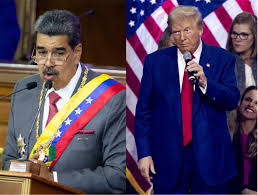
This Wednesday, Trump traveled to the most favorable location to make his pronouncements. He traveled to Miami, the heart of the opposition to Venezuelan President Nicolás Maduro in the United States, to participate in a meeting of the American Business Forum, where Venezuelan opposition leader and this year’s Nobel Peace Prize laureate, María Corina Machado, was also speaking. However, he chose not to address the issue, except to defend the extrajudicial attacks carried out by Venezuelan ships against alleged drug-running boats in the Pacific and the Caribbean, which have left at least 66 dead: “We are blowing up cartel terrorists. We are blowing them up—those linked to the Maduro regime in Venezuela and elsewhere,” he declared.
For her part, Machado reiterated, in her teleconference address, her unconditional support for such measures. According to the statement, Maduro is “the ringleader of this narco-terrorist structure that has declared war against the Venezuelan people and against democratic nations in the region, where criminal networks support the Chavista regime through the trafficking of drugs, gold, weapons, and people.” “Maduro started this war, and President Trump is going to end it.”

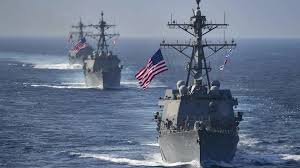
Agencies/ ElPais. Spain/ Macarena Vidal Liy/ Extractos/ Excerpts/ CubayVenezuelaHoy/ Internet Photos/ Arnoldo Varona.
THE CUBAN HISTORY, HOLLYWOOD.




